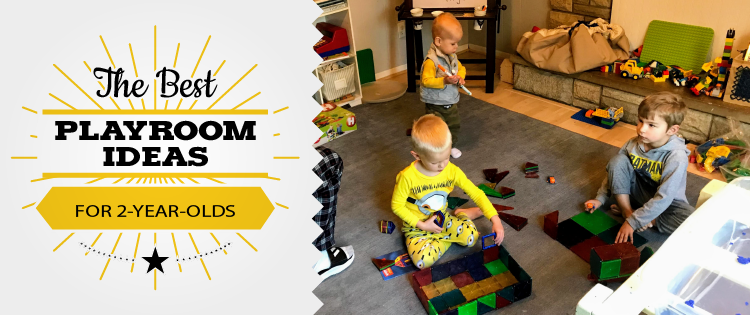Last Updated on July 1, 2022 by admin
Pictured: My kids’ playroom isn’t professionally designed, but it gets the job done. Scroll down to view playrooms from the pros
First of all, I’ll say that you’re not somehow depriving your kids if your home doesn’t have a playroom. I think many of us in the U.S. end up with houses that are bigger than what we need, and we spend too much time worrying about and maintaining them. I already wrote a post on how you can integrate play spaces throughout the home; toys don’t necessarily have to be concentrated in one room.
However, I do think it can alleviate some stress if you keep most or all of your kids’ toys in designated areas. That way, you can keep the rest of your home clutter-free.
When you start to intentionally plan out and design a play space, it can help to think about the feelings you want that space to evoke when your kids see it. Do you want kids to feel calm or energized when they’re in the space, for example? Would you rather the space to evoke a sense of welcoming warmth or modern style?
If you’re not sure which style fits you, maybe consider which of your kids’ toys that you absolutely love and see if those toys fit within a theme that you can extend to your playroom decor. You can also simply extend the decor style that you love in other rooms of your house into the playroom.
If you’re looking for some inspiration or a place to start, here are general styles that I’ve seen crop up in rooms or spaces that are dedicated for kids’ use. Which style or combination of the 5 styles listed below best fits your own intentions for your play spaces?
1. Naturalistic
Naturalistic play rooms make use of organic elements like houseplants and natural fiber baskets, and employ mostly neutral colors. There may also be nature themes on wall art.
2. Exciting / Fun
Fun playrooms tend to have lots of pops of bright colors and integrate lots of design elements and decorations, eschewing the minimalist white space you often see in playrooms these days.
Cozy / Homey
If you’re going for a play space that feels comfortable and inviting, you can integrate warm fabrics, furniture that has soft lines without hard edges, browns or neutrals instead of blinding white, and more saturated colors instead of primary ones.
Whimsical
Whimsical play spaces make use of soft colors, often pastel or pink shades, as well as muted lighting and images and shapes that evoke a sense of grace (such as the toy swan shown here).
Minimalist
The main feature of minimalist playrooms is that they convey a sense of open space and clean lines. This playroom is a little warmer and softer than what I think of as minimalist style, but you may notice that this room looks great despite not having many decor elements that don’t serve an actual purpose in the room (furniture, toys, toy shelves).


